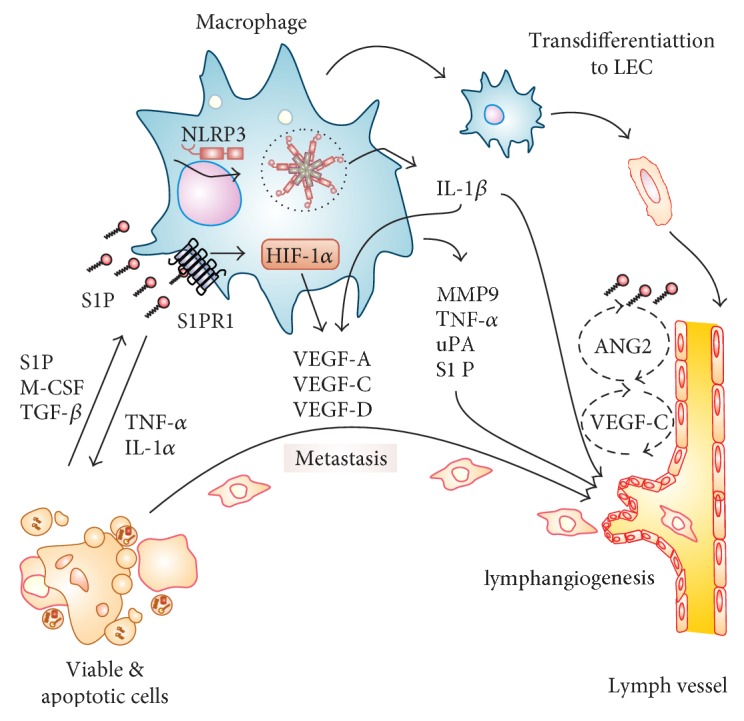Figure 1.

S1P-activated macrophages in lymphangiogenesis. Apoptotic cell-derived factors such as S1P, M-CSF, and TGF-β influence the macrophage phenotype. Triggering S1PR1 on macrophages causes NLRP3 inflammasome activation with the subsequent maturation of IL-1β. Released IL-1β provokes lymphangiogenesis in autocrine and paracrine manner by inducing VEGF-C in macrophages and endothelial cells. In macrophages, hypoxia-induced transcription factor HIF-1 controls the expression of VEGFs. Macrophages produce various factors such as MMP9, TNF-α, uPA, and IL-1α. These, together with VEGFs, induce lymphangiogenesis directly or by inducing VEGFs production by endothelial cells in multiple steps (discontinuous line). S1P also induces secretion of ANG2 from LECs (by unknown mechanisms, discontinuous line), to trigger lymphangiogenesis. In addition, macrophages may transdifferentiate to LECs. For details, see the text.
